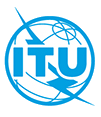Information technology - Computer graphics, image processing and environmental data representation - Live actor and entity representation in mixed and augmented reality (MAR)
This document defines a reference model and base components for representing and controlling a single LAE or multiple LAEs in an MAR scene. It defines concepts, a reference model, system framework, functions and how to integrate a 2D/3D virtual world and LAEs, and their interfaces, in order to provide MAR applications with interfaces of LAEs. It also defines an exchange format necessary for transferring and storing LAE-related data between LAE-based MAR applications. This document specifies the following functionalities: a) definitions for an LAE in MAR; b) representation of an LAE; c) representation of properties of an LAE; d) sensing of an LAE in a physical world; e) integration of an LAE into a 2D/3D virtual scene; f) interaction between an LAE and objects in a 2D/3D virtual scene; g) transmission of information related to an LAE in an MAR scene. This document defines a reference model for LAE representation-based MAR applications to represent and to exchange data related to LAEs in a 2D/3D virtual scene in an MAR scene. It does not define specific physical interfaces necessary for manipulating LAEs, that is, it does not define how specific applications need to implement a specific LAE in an MAR scene, but rather defines common functional interfaces for representing LAEs that can be used interchangeably between MAR applications.

ISO/IEC 18040:2019
https://www.iso.org/standard/70721.html

